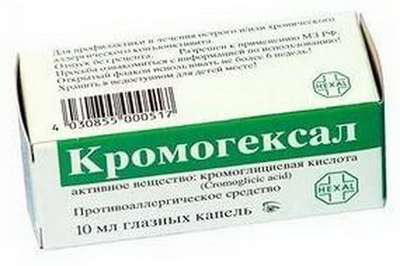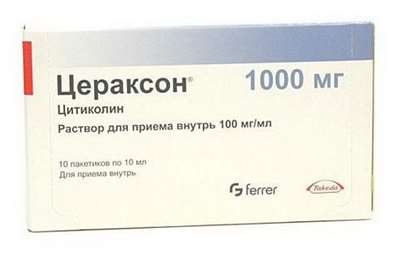The Canonical Structure of DNA
24 Nov 2016
Biophysicist Dr. Doping speaks about the DNA double helix, the rule of complementarity and deciphering of the human genome. What is the biological role of DNA? How is the human genome? Which developments in biology and medicine resulted in the discovery of DNA?
Although DNA is a chemical compound isolated from the cell nucleus, known since the middle of the XIX century, the structure of DNA was discovered by Watson and Crick in 1953. The word "DNA" is an abbreviation, like probably all know from "deoxyribonucleic acid" and the word "nucleic" precisely because of the fact that it was found in the nuclei of cells, ie nucleus. And so it was clear from the outset that it plays some biological role, but which, again before the opening of the structure in 1953, did not know precisely. And only after that it became completely clear that it lies in the DNA genetic information in all living organisms.
The huge structure of DNA significance lies in the fact that, as we now know, in all living organisms on Earth genetic information is contained in the form here of this structure opened by Watson and Crick, who is called the double helix.
How does it work, this double helix? It consists of two polymer chains, that is chains in which the chemical repeat units almost strictly, "almost" in the sense that they four grades: A, G, T and C. And these four-letter alphabet written all the genetic information in the DNA molecule.
Vitamin B12 ( Cyanocobalamin injection) - is helpful with making DNA.
We, the people, the complete genome, that is, one copy of our genetic information - is the text of roughly three billion letters, that these A, T, G and the C, repeated in sequence. Just as plain text, written, for example, in Russian, is a sequence of letters of our alphabet. That is, the genetic alphabet consists of four letters.
These chemical compounds are quite difficult arranged - each of which consists of three parts: the so-called base which defines A, T, G or C; sugar to which the base is attached; and even to the same sugar on the other hand so-called bonded phosphate group that bears a negative charge. And a triple - base, sugar and phosphate - is repeated numerous times, is connected in such a long, long chain. And this chain has a direction, it has a chemical direction. And DNA itself comprises two such chains, they are oppositely directed relative to each other as said antiparallel. And between the two there is a famous chain complementarity rule, open by Watson and Crick, consisting in the fact that if one chain is A, the other necessarily T, and vice versa; and if one G, C in the other, and vice versa. That is the whole chain consists of pairs AT and GC, too, in a certain irregular sequence.
Further these two antiparallel chains while still twisted into a spiral. That is, DNA is a double helix, so that each full turn of the spiral - that is such helix - and at each turn of the helix there are 10 base pairs. These are the base pairs that are relative to each other are rotated by 36 degrees so that 10 pairs made a complete revolution.
What are the parameters of the double helix? Its thickness. It is almost a cylinder is obtained: externally charged phosphate groups, and the diameter of the cylinder 2 nanometers. It really nanostructure, at least, a very small thickness. Its length can be enormous, depending on whether the length of the DNA molecule. For example, if you pull out all the DNA molecules in the nucleus of our cells alone, you get a column thickness of 2 nm and a length of about 2 meters, it is the enormous length of the molecule. Of course, it is somehow in the cell is very compact, we also know in part how. And all of this very long molecule, very long thin molecule is packaged inside the cell nucleus.
This is the famous double helix, and in this form is the genetic material in all organisms. I stress - completely in all living organisms.
There are even viruses, is a special case. Viruses are not living organisms, they can not live independently. The minimum unit of the living, that life with which we are familiar, is a cell. Therefore, the virus is not a living organism, it is just a set of molecules. But when the molecular complex enters the cell, it behaves as a parasite, and various viral diseases arise.
The virus also carries genetic information, but this genetic information can already be in a variety of forms. This may be the same as in the these living organisms, the double helix DNA; it may be a single strand DNA; it may be RNA. RNA - a very close relative of DNA, the molecule is very similar, it also plays a huge role in my life. She, too, each monomer unit, consists of three units, the only sugar a little bit different. In fact, DNA from RNA differs by only one atom - RNA from excess oxygen in sugars are otherwise quite similar to each other.
The virus genetic information may be in the form of RNA sequences rather than DNA. For example, the infamous immunodeficiency virus, HIV. It has the genetic information in the form of RNA. Similarly, influenza virus, for example. It has the genetic information in the form of RNA instead of DNA. But in all living organisms, it is always a double helix of DNA.
Hence the great importance of this discovery, which was made by Watson and Crick in 1953 and, in fact, which began with a completely new era in the development of science, the era of molecular biology, biology when all has been put on the molecular, solid molecular basis.
Since the discovery of the double helix, we certainly learned a lot about the physical structure, the spatial structure of DNA and the proteins that carry out the expression of the genetic information contained in DNA. And also, of course, a huge achievement since the discovery of the DNA of years has been the development of DNA texts reading techniques. We learned to read DNA texts, we now do it very economically. That is to say, the determination of the DNA sequence of all three billion units of one person, that is the definition decoding of the genome of a particular person is now worth about a thousand dollars. It is incredibly cheap compared to what it was 15 years ago when I was first deciphered the human genome - it cost about $ 3 billion. This is quite disparate figures, enormous progress in the technical field of DNA sequencing.
We now know the sequence of nearly all bacteria. And already in the thousands and thousands of people completely decoded DNA sequence. It is now no longer is no problem, and it is, of course, a real revolution in the field and a fundamental understanding of life, and physiology, and in the field, of course, medicine. We are moving to a new medicine that is much more personalized and is tuned to a specific patient with specific genetic characteristics. Now we are still largely in the previous era when medications and apply treatment for any people. This, of course, is wrong in principle and should be much more aimed at a specific person with specific genetic characteristics.
All this was made possible by huge advances in molecular biology and all the technology that has emerged around it.

 Cart
Cart





